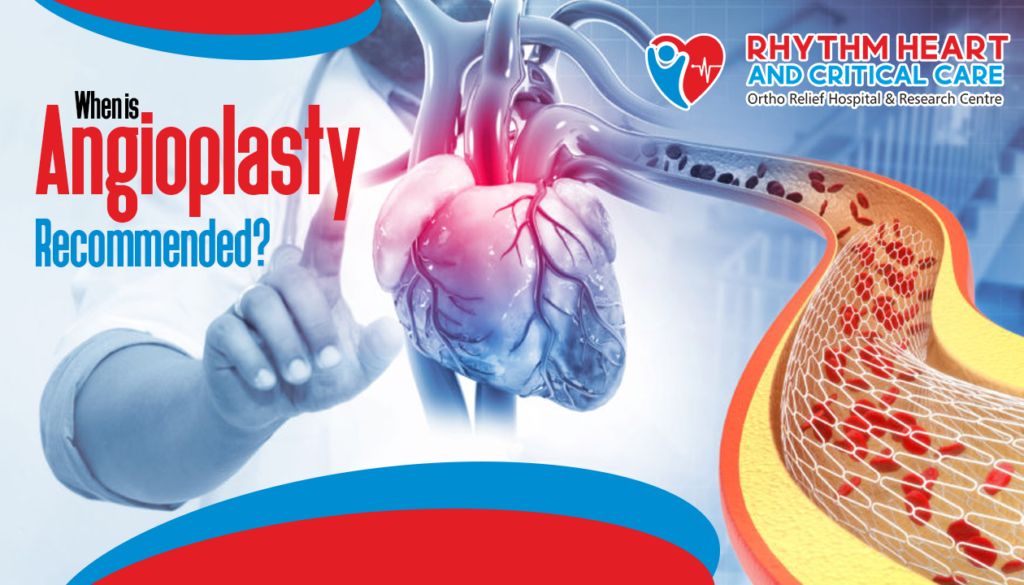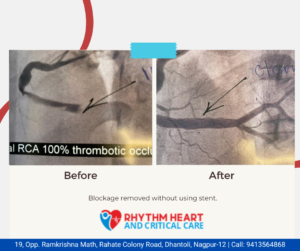Imagine waking up in the middle of the night with chest pain so severe you can’t catch your breath. A visit to the hospital reveals that your arteries are blocked—now you’re left wondering: When is angioplasty recommended to save your heart?
When is angioplasty recommended? Angioplasty is a medical procedure used to open narrowed or blocked blood vessels, primarily those that supply blood to the heart. This procedure is commonly performed to treat coronary artery disease (CAD) and is often recommended when other treatments fail or when a patient’s condition worsens.
In this article, we’ll discuss in detail when angioplasty is recommended and the factors that play a role in making this crucial decision.
Understanding Angioplasty
Angioplasty involves inserting a catheter with a balloon at the tip into a blocked or narrowed artery. The balloon is inflated to widen the artery, allowing blood to flow more freely. Sometimes, a stent (a small mesh tube) is placed to keep the artery open. This procedure helps alleviate symptoms such as chest pain (angina) and prevents more severe conditions, including heart attacks.
Do You Know: Approximately 4.5 lakh (450,000) angioplasty procedures are performed annually in India.
When is Angioplasty Recommended?
Have you or someone you know experienced chest pain? Angioplasty is typically recommended in situations where the benefits of the procedure outweigh the risks. The decision to perform angioplasty depends on several factors, including the severity of the coronary artery disease, symptoms, and the patient’s overall health condition. Let’s explore the most common situations when angioplasty is considered.
1. Severe Blockages in the Arteries
One of the most common reasons angioplasty is recommended is the presence of severe blockages in the coronary arteries. Coronary artery disease occurs when cholesterol and fatty deposits (plaque) build up in the arteries, causing them to narrow and restrict blood flow. When these blockages reduce blood flow to the heart significantly, it can result in chest pain, shortness of breath, and even heart attacks.
If non-invasive treatments such as lifestyle changes, medications, or coronary artery bypass surgery (CABG) are not effective or feasible, angioplasty becomes a recommended intervention. The procedure can restore blood flow, reduce symptoms, and improve the quality of life.
2. Unstable Angina or Acute Myocardial Infarction (Heart Attack)
In patients who present with unstable angina or have suffered a heart attack, angioplasty may be urgently recommended. Unstable angina refers to chest pain that occurs unexpectedly, lasts longer, and is more severe than stable angina. It often occurs while resting and indicates that a heart attack might be imminent. A heart attack, on the other hand, happens when a blood clot or plaque blocks blood flow to the heart muscle.
In such cases, angioplasty is recommended to restore blood flow to the affected area of the heart, limit heart muscle damage, and prevent further complications. Time is of the essence, and angioplasty can save lives by quickly addressing the blockage.
3. Symptomatic Patients with Poorly Controlled Heart Disease
Patients who experience persistent symptoms of coronary artery disease, such as angina or shortness of breath, despite medication and lifestyle changes, may be considered candidates for angioplasty. If symptoms are significantly affecting their daily life and quality of life, and other treatments have failed to provide relief, angioplasty is recommended as a more definitive solution.
For example, a person who is unable to perform regular activities like walking, climbing stairs, or exercising due to chest pain or fatigue may benefit from angioplasty. By relieving the blockage in the arteries, the procedure can help alleviate these symptoms, allowing the patient to lead a more active life.
Also Read: Rhythm Hospitals
4. Patients with Diabetes
Diabetes is a major risk factor for coronary artery disease. Individuals with diabetes tend to develop blockages in their coronary arteries earlier than non-diabetic individuals. Additionally, people with diabetes are more likely to have multiple blockages in the arteries, which increases the complexity of the condition.
For diabetic patients experiencing symptoms of heart disease, angioplasty is recommended to improve blood flow and reduce the risk of heart attack. In some cases, angioplasty can be a life-saving procedure, as it helps prevent further complications related to both diabetes and heart disease.
5. Patients with Left Main Coronary Artery Disease
The left main coronary artery supplies a large portion of the heart with oxygenated blood. When this artery becomes narrowed or blocked, it can lead to significant problems, including heart failure or sudden cardiac arrest. Left main coronary artery disease is a high-risk condition that often requires surgical intervention.
In certain cases, when bypass surgery is not an option or when the blockages are not severe enough to warrant surgery, angioplasty is recommended as an alternative treatment. However, the decision depends on factors such as the patient’s overall health, the extent of the blockage, and the skill of the cardiologist performing the procedure.
Annual growth in coronary interventions.
6. Recurrent Blockages After Bypass Surgery
For patients who have previously undergone coronary artery bypass graft surgery (CABG), it is possible for the grafts to become blocked over time. If a person who has had bypass surgery experiences new symptoms of angina or heart attacks due to graft failure or recurrent blockages, angioplasty may be recommended to address these issues.
Angioplasty can often be performed to open blocked grafts or native coronary arteries, reducing the need for further surgery. In some cases, angioplasty can be an effective way to treat recurring blockages without resorting to another bypass surgery.
7. Poorly Functioning Heart with Severe Coronary Artery Disease
In cases where a patient has both severely narrowed coronary arteries and heart failure, angioplasty can be recommended to improve heart function. When the heart is not pumping blood effectively, the condition can lead to fatigue, fluid buildup, and other serious symptoms.
Angioplasty may be suggested to reduce the burden on the heart by improving blood flow. It can also help alleviate symptoms of heart failure, such as swelling and shortness of breath, which significantly enhance the patient’s quality of life.
8. Non-Responding to Medications
If a patient’s condition does not improve with medications such as nitrates, beta-blockers, or statins, and the risk of heart attacks or stroke is high, angioplasty is recommended. This procedure provides a direct intervention to restore normal blood flow, bypassing the need for continued medication that may not provide sufficient relief or control over the condition.
Conclusion
If you’ve been experiencing chest pain or other signs of heart disease, it’s important to get checked by a healthcare professional. Understanding when angioplasty is recommended could be the key to preventing more serious heart issues.
It’s typically recommended when non-invasive treatments have failed, when the condition is severe enough to cause significant symptoms or risk, or when there’s an emergency situation like a heart attack. The decision depends on the severity of the blockage, the patient’s symptoms, overall health, and whether other treatments, like surgery or medications, are effective. Angioplasty can greatly improve the quality of life for many patients by restoring normal blood flow to the heart and reducing the risk of heart attacks, strokes, and other complications.






